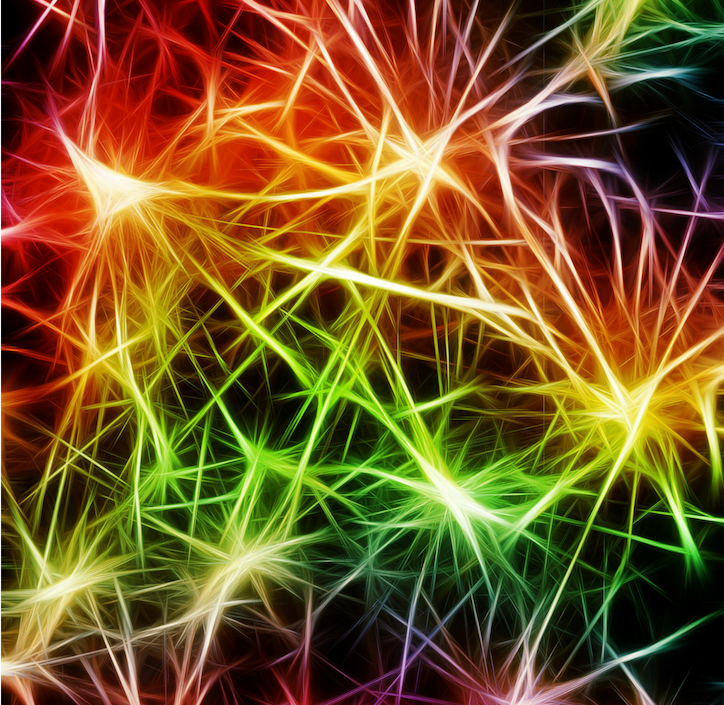Pain Science and Stress Biology Explained
We, as health care professionals, are moving away from the concept that persistent pain is solely related to tissue damage, and instead, moving toward viewing persistent pain as a larger phenomena, that includes emotional, physical and mental systems. From this broader understanding we are creating new, more effective approaches to persistent pain.
About 1 in 10 Canadians aged 12–44 experience chronic pain, according to 2007/08 Canadian community health survey(1). The issue of persistent pain continues to present staggering costs to the health care system—in the range of $43–$60 billion per year in health care expenditures and lost productivity. This exceeds the cost of cancer, heart disease, and HIV combined(2)(3)(4).
In the past 30 years however, some pivotal clinical research discoveries have expanded our knowledge of pain.
X-ray, MRI and CT imaging methods are crucial to the early detection of serious disease and acute tissue trauma. But numerous studies have shown the tissue changes these imaging methods capture are not reliable indicators of pain.
In one large study that reviewed spinal image findings in over 3000 people, the prevalence of disk degeneration ranged from 37% in 20-year-olds to 96% in 80-year-olds. The prevalence of disk protrusion ranged from 29% in 20-year-olds to 43% in 80-year-olds(5). The study exclusively reviewed subjects with no history of pain.
This is one type of research that led to the belief that a tissue-focused (pathoanatomical) approach was not always the most helpful way to explain why people still hurt. These approaches have been associated with increased fear, anxiety and incorrect beliefs, all of which contribute to an increased pain experience(6).
However, some of these discoveries supported important shifts in treatment approaches for acute and chronic pain. This new understanding involves the inclusion of other systems within our physiology, treating the entire body when answering the question ‘Why does pain persist?’
Neuroscience research has uncovered changes that occur in the nervous system. The brain processes information differently in chronic pain scenarios. Centres in the brain associated with the experience of pain respond more sensitively to stimuli. In acute pain scenarios, these centres activate, causing people to experience short-term pain which gradually lessens. However in scenarios where pain persists, these centres have heightened reactivity. For instance, a stimuli that would not typically trigger a pain response (such as light touch or an activating muscle) is subconsciously deemed as a threat and requires a protective response—like pain(8).
This new understanding explains pain as a type of physiological stress response. The muscular system, the motor system, the autonomic nervous system, the immune system, and even the perceptual system are part of the body’s protective strategy against internal or external threats (be they real or perceived)(8).
Now let’s discuss how the body can use the motor system and the autonomic nervous system as ‘protection’.
Raised resting tone in muscles surrounding a painful area is a common feature of persistent pain. The motor system (the brain area affecting muscle and movement) sometimes tries to ‘defend’ the body from pain. Because of the heightened sensitivity in the nervous system, the motor system can frequently activate in a non-productive way. We describe it as non-productive because when pain dominates the motor system, the motor system usually focuses on preventing movement. As a patient, you might be aware of how awkward or challenging movement is when you are in pain.
The autonomic nervous system is a dual system. It has two complementary sides, parasympathetic and sympathetic, both essential in providing balance in our bodies. The parasympathetic signals energy conservation, digestion and healing. The sympathetic system helps coordinate acute immune response, high energy expenditure and strong cardiovascular demand. In an ideal scenario both systems dominant at different times as we go through our day. However, a common trait of persistent pain is the increased dominance of the sympathetic nervous system.
Balance in this system is important, but research has shown that in persistent pain the body loses some of its dynamic flexibility to move between sympathetic and parasympathetic states.
When the sympathetic system is elevated for prolonged periods the body shows the same signs as when it’s under chronic stress. This state has been linked to issues such as cardiovascular disease and is associated with anxiety and depression(10). It can affect everything from digestion, sleep and the ability for mind and body to become relaxed.
Therefore, interventions that aim to increase parasympathetic tone are helpful in managing persistent pain. Evidence based techniques geared at restoring balance in the autonomic nervous system can include; biofeedback, mindfulness, somatic practices like tai chi and yoga, neuromuscular re-education and physical conditioning.
Every individual who experiences chronic pain will have a different clinical presentation—each body reacts differently. Some of what we have discussed in the article may resonate, some may not.
There is strong evidence that patients can improve their resiliency and coping capacity for chronic pain by understanding the physiology of pain neuroscience(7). If you suffer from chronic or persistent pain, it’s also critical to engage in some form of movement practice to maintain or restore function and health; this can also help to normalize dysfunction in the nervous system. Finding the right level of physical activity can be difficult initially. It may help to use a pacing strategy and/or set graded goals. These are important tools for creating an achievable program.
Psychological interventions aimed at reducing the cumulative stress burden commonly experienced in persistent pain can also be effective. This might include cognitive behavioural therapy (CBT), or a form of CBT such as acceptance and commitment therapy.
Chronic or persistent pain is a complex condition. You can be an advocate for your own health and wellness by increasing your understanding and gaining some context about why your body might be behaving differently.
If you have any questions or would like to learn more, please feel call me or leave a message at Acacia Westside location.
References:
- Component of Statistics Canada Catalogue no. 82-003-X Health Reports. Chronic pain at ages 12 to 44 by Pamela L. Ramage-Morin and Heather Gilmour. https://www150.statcan.gc.ca/n1/en/pub/82-003-x/2010004/article/11389-eng.pdf?st=u44X9FPL
- Canadian Pain Society. (2010). DRAFT Canadian Pain Strategy – July 2010.
- Lynch, M. E. (2011). The need for a Canadian pain strategy. Pain Research & Management: The Journal of the Canadian Pain Society, 16(2), 77.
- Wilson, M. G., Lavis, J. N., & Ellen, M. E. (2015). Supporting chronic pain management across provincial and territorial health systems in Canada: Findings from two stakeholder dialogues. Pain Research and Management, 20(5), 269-279.
- HHS Public Access Author manuscript AJNR Am J Neuroradiol. Author manuscript; available in PMC 2015 June 13. Published in final edited form as: AJNR Am J Neuroradiol. 2015 April ; 36(4): 811–816. doi:10.3174/ajnr.A4173.
- Louw A, Diener I, Butler DS, Puentedura EJ 2011 The effect of neuroscience education on pain, disability, anxiety, and stress in chronic musculoskeletal pain. Archives of PhysicalMedicine and Rehabilitation 92: 2041–2056.
- Moseley GL, Butler DS 2015 Fifteen years of explaining pain: The past, present, and future. Journal of Pain 16: 807–813.
- Gifford LS, Muncey H 1999 Explaining Pain to Patients. Paper presented at the International Association on the Study of Pain, Vienna, Austria.
- Spine (Phila Pa 1976). 2017 Aug 1;42(15):1172-1178Smudging of the Motor Cortex Is Related to the Severity of Low Back Pain. doi: 10.1097/BRS.0000000000000938.
- JanszkyI,AhnveS,LundbergI,HemmingssonT.Early-onsetdepression,anxiety,andriskof subsequentcoronaryheartdisease:37-yearfollow-upof 49,321 young Swedish men. J Am Coll Cardiol (2010) 56(1):31–7. doi:10.1016/j.jacc. 2010.03.033




